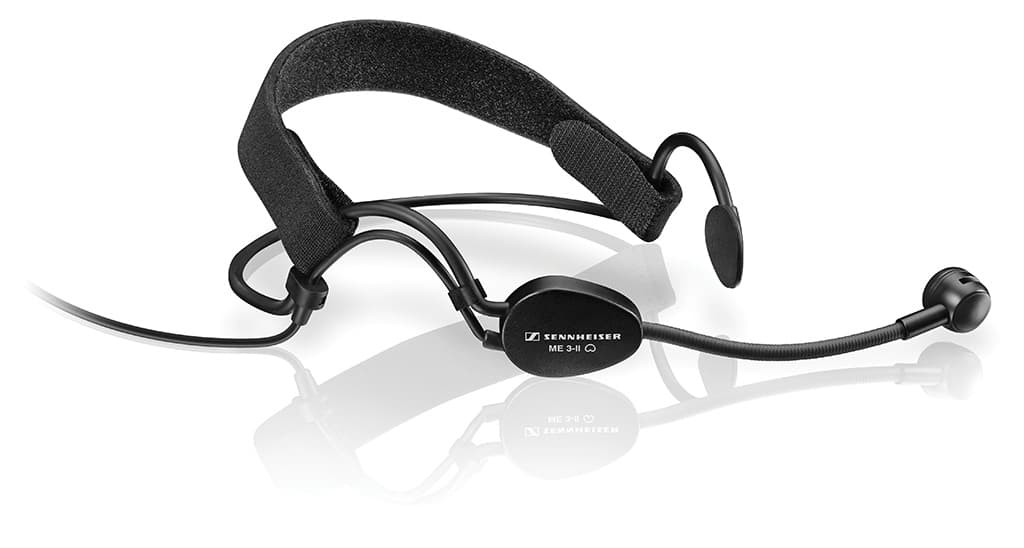
Review: Sennheiser EW D1 Wireless
Need your own go-anywhere wireless? Time to pack your case.
By now we should all know the (cordless) drill: UHF rules the wireless roost. Mission critical applications use it and it’s the best sounding chunk of electromagnetic spectrum to be in. But there is another way: using the 2.4GHz ISM (Industrial, Scientific & Medical) band. But there are pros and cons… actually, there are mostly cons.
2.4GHz operates in the crazy-busy wireless band inhabited by wi-fi, Bluetooth, garage door openers and the rest.
To successfully operate in this band you have to have more error correction to get a solid signal, resulting in some extra latency on top of the digital conversion.
2.4GHz is a much more energetic wavelength than UHF and thus more directional. Bad news unless you’re constantly in line of sight.
Systems in this band normally accommodate no more than 12 channels in one setup (although the ew D1 promises a theoretical 15). Which can be limiting.
All of which doesn’t sound great.
So what’s an ISM band system got going for it? Normally they’re cheap; really easy to set up; being digital, there’s no compansion; and you can use it anywhere around the world without stepping on any UHF wireless spectrum toes.
Sabine was the first to explore the space back in the ’90s. Then Line6 was the next most notable innovator (I’ve had experience with the Line6 product for a few years and was quite satisfied with the performance). More recently, Sony, Audio-Technica, and Shure have released wireless product using the 2.4GHz band. Now, it’s Sennheiser’s turn with the Evolution Wireless D1.
Up to this point, all the manufacturers have put their 2.4GHz products in the ‘entry level’ category. Presumably it’s recognition that if rock-solid performance, super-low latency and great sound quality is important to you, then you’re better off spending more on a quality UHF system.
What’s interesting about ew D1 is that the price and features don’t amount to an apology for working in the 2.4GHz band. Finally, here is a system that’s proudly non-UHF.

NEED TO KNOW
ONE FOR THE ROAD
That said, the price (~$1100 a channel) is still in the lower to mid end of the market, but does put it up against some very worthy UHF competition. So what’s the new ew D1 bringing to the table?
D1 is presented as a musician’s or travelling sound guy’s system, with wireless kits arriving in plastic hard cases. The case is very sturdy and allows you to neatly pack away your transmitter, receiver, universal power supply and leads. It does mean the handheld mic, for example, comes without a pouch (you put it back in the case after use).
So the emphasis is on ease of use and transportability, rather than permanent installation — though you can buy a rack mounting kit — and there’s no encouragement to buy ew D1 separate components.
I think you’re starting to get a picture here of who Sennheiser is pitching the D1 to: performers, small-scale rental jobs, anyone that only needs a couple of channels. News from Sennheiser is, there’ll be an AV presentation product coming out in a couple of months that will run in the DECT specific 1880-1900MHz band.
Emphasising the set ’n’ forget suitability of the D1 there’s some neat DSP onboard: de-essing, auto gain control and EQ. The audio features are all accessed via a very clear and bright oLED display with an easy-to-use dial ’n’ press pushbutton arrangement. What’s more, all the features and setup procedure are laid out very succinctly on a cheat sheet A3 poster and an even more succinct A5 card — there’s no instruction manual as such.
FLYING CONFIDENTLY SOLO
There’s nothing entry level about the build quality of the D1. The handheld microphone feels great — solid and well balanced, with on/off and mute switches all reassuringly positive to control. Ditto the beltpack. It’s compact and with its steel construction feels bulletproof.
Traditionally, I’m a Shure wireless person, so I was keen to spend some time with the Sennheiser mic. I had the cardioid 835 capsule version for review and there was plenty of gain before feedback, lots of zing and life, and a proximity effect you could really work to your advantage. Performers I worked with were all complimentary. The level of handling noise is perfectly acceptable. The 3.9ms latency is also fine — although if you’re using in-ear monitoring you may want to think carefully about a lower-latency alternative.
This is a good system with plenty of features. To reiterate, it’s a high quality, go-anywhere, limited-channel setup that won’t let you down. And in that regard I’ve no hesitation in recommending it.

















RESPONSES